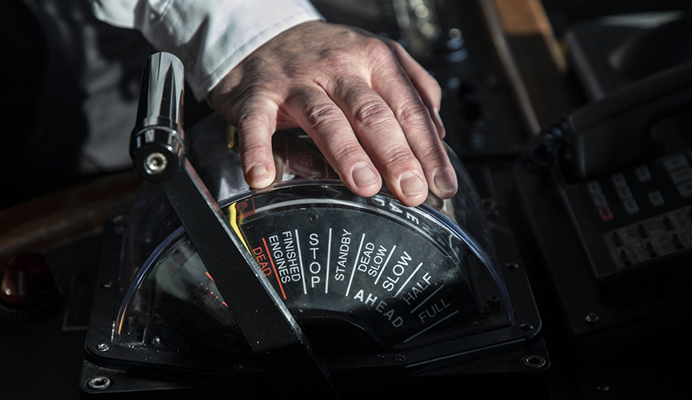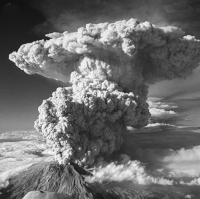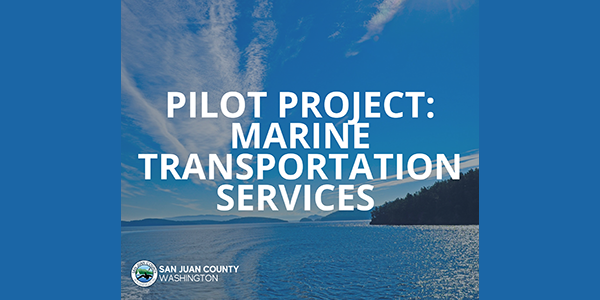||| ORCASIONAL MUSINGS BY STEVE HENIGSON |||
I asked an old friend, “How did emergency services find your house, before the whole county was 9-1-1-ed with street names and numerical addresses?”
“Well,” he said, “you could describe exactly where you were, road-by-road and turn-by-turn. But if that didn’t help, you could have someone run down to the end of your driveway to wait for the fire truck.”
“But suppose there wasn’t anybody to do that?” I asked. “What then?”
“Well, then the Fire Department would just have to call OPALCO. Starting early on, there were good county-maintained road maps for every island, and OPALCO knew where every one of their customers were on those maps. They could tell where you were located, according to the nearest electric-power distribution box, and according to the number on your electric meter.”
Pretty good house-by-house maps were a benefit visited on us Orcasians by the U.S. Census, which needed to know exactly where everybody lived, exactly how many people lived there, and a whole bunch of other exact information. By the time each decennial census was over, house-by-house maps had been generated, double checked, and printed up. County government, the Fire Department, and the Sheriff’s Office all had them. There might have been a copy at the Orcas Island Library, too. But 10 years is a long time between editions, and there were always lots of changes going on.
So I asked him, “And what did you do when people were coming to visit from off-island?”
“Well,” he said, “that brings us back to road-by-road and turn-by-turn directions. And, of course, there were a few road signs to go by, here and there. But at that time, we were living on Shaw Island, so when we were going to have visitors, we would go down to meet the ferry, and then just lead them back to our house by driving slowly in front of their car.”
Once I hosted some off-island friends of my own, who were coming down in a rented car from Vancouver, BC. I told them how to get to Anacortes, and where the ferry terminal was, and what to do when they got off of the ferry onto Orcas Island.
“Get off of the ferry, turn left at the top of the ramp, follow the double yellow line, and drive exactly six miles,” I told them. “Then turn right, and go up the hill to the first house on the right.”
They showed up at my house an hour late. I wasn’t too worried: How lost could they get on an island? But why were they so late, when the ferry had been right on time?
“We drove exactly six miles,” they said, “but the road we turned right onto went on and on, and didn’t go up a hill. So we went back to the main road and drove back and forth, thinking that we’d somehow missed the correct turn. Then we tried driving further than the six miles you’d told us. We saw the big map directory at the corner on the road. Since we knew that we were lost, we stopped to look at it. That map told us where your street was. But it wasn’t six miles from the ferry. By our car’s odometer, it was almost 10 miles!”
I went out to look at the odometer. It was a Canadian car, of course. It’s speedometer and its odometer read out in kilometers.
**If you are reading theOrcasonian for free, thank your fellow islanders. If you would like to support theOrcasonian CLICK HERE to set your modestly-priced, voluntary subscription. Otherwise, no worries; we’re happy to share with you.**









:-D
In the eighties I worked as a 911 dispatcher here on Orcas. There were a few of us and we did it out of our homes. I was relatively new to the island (6 years maybe) and was pretty impressed with the way people were able to give directions to me and then the collective knowledge of all personnel involved seemed to work well too. That definitely goes down as one of the more unusual jobs I’ve had on the island.
Prior to the implementation of “E-911” and a whole new mapping protocol and dispatch service out of FH, those of us in the remote regions of Orcas (such as Doe Bay) would depend on the wonderful women who dispatched us from their homes, such as Kathi describes. Judy Madan was another heroine. At 2am, in the rain, in the winter, with horrible radio static, one of these goddesses would patiently direct me (and all the other responders)…recall there were no street names or addresses then… by describing precisely what the landmarks were (such as go down “horseshoe highway” until you get to the road to Klauder’s farm, then take a left at the road that has 3 mailboxes on the right, then when the driveways show up in 1/4 mile, take the right driveway. You’ll know you are on the right road because there is a cattle guard 50 feet in.) We firefighters had several bright yellow canvas bags made by Miles McCoy filled with sand and with reflector tape on them, so the first truck in would drop a bag (a breadcrumb) at each turn we had to make, so the guys following would know how to get to the incident. It felt reassuring to have a real voice on the other end of the radio who actually knew every road, driveway and landmark on the island.
These are my favorite sort of Orcas stories. I remember looking at a friend’s driver’s license and it actually said, 2.5 miles up Buck Mt to blue star on right driveway (paraphrased but true).
So many things have changed in the 28 years I’ve been here. I feel it in my bones when I hear the nostalgic reminiscing of others.
People just worked harder then and cared more… HC-1
Merry, That is the best technology that was available to us at the time and everyone worked as a team to help everyone, just like they do today. I’m not sure that in this particular situation modern people care any less or don’t work as hard.
In my previous life, I spent nearly 20 years in a 911 dispatch center in Olympia. I remember the days when we didn’t have street addresses and all the challenges that entails to get help to folks in a hurry. When we upgraded to E-911, and address location was going to be instantly available to us, I was against it because of “privacy” concerns. One of our first calls on that first day came from a man who had suffered a stroke and was unable to speak. We could see where he was calling from and send appropriate help. My privacy concerns went away, comforted that we could actually save lives with technology.
As one of those home dispatchers in the 80’s I used to appreciate the various people with scanners who could tell when we were stuck and would call us on our other line with something like, “You know, Honey, that’s that new building site in back of the old Whatever place! Just tell them to take the 3 left after the store.”
This is another contribution to the thread of emergency history on the island:
I was reading a book called “125 Years Olga-Memories and Potlucks” where Clara Abrahamsen, page 25, describes working as a switchboard operator for Inter Island Telephone Company between 1938 and 1954. She says “As the island had no fire department, fires were reported to us. We would activate a fire siren by the switchboard, and then try to keep our cool while the switchboard lit up like a Christmas tree, with calls coming in from everyone within hearing distance of our siren…If the fire was in a location beyond the range of our siren, we or the person reporting the fire would alert neighbors by ringing five long rings on their party line. This was pretty effective, too, as the response was always wonderful.”